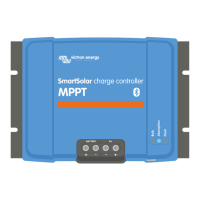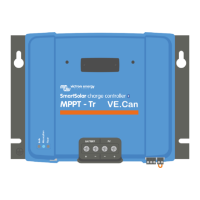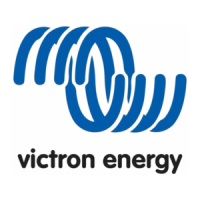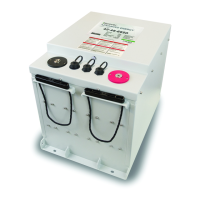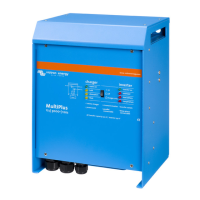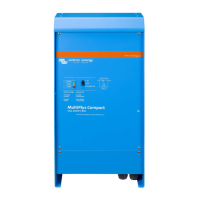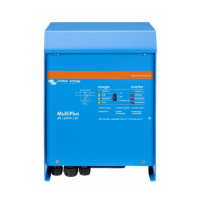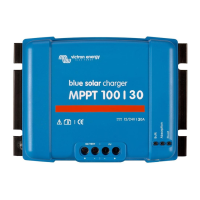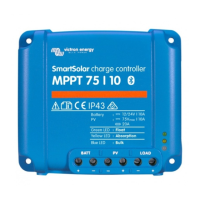• Dirty panels.
• Seasonal differences.
• Wrong orientation and/or inclination.
Problems with a panel or panel wiring:
• Mechanical or electrical issue with an individual panel (or multiple panels).
• Wiring problems.
• Blown fuses.
• Open or faulty circuit breakers.
• Splitters or combiners issues, or these are used in an incorrect way.
PV array design issues:
• Solar array wiring configuration mistake - not enough panels in a series string.
Reverse PV polarity:
• The positive and negative have been swapped when connected to the controller, read next paragraph: “Reverse PV polarity”.
9.2.7. Battery voltage setting too low
The battery will not be charged if the “battery voltage” setting in the VictronConnect App is set at a voltage lower than the actual
system voltage.
Check that the battery voltage is set properly in the settings of the solar charger. The battery voltage setting has to match that of
the voltage of the battery.
To access the “battery voltage” setting, navigate to the controller settings in VictronConnect and then click on the “Battery”
settings menu.
The “battery voltage” setting is listed at the top of the battery settings menu. Depending on controller model 12, 24, 36 or 48V can
be selected.
In case the VictronConnect App is not available and a display is used, refer to the display manual on how to check or change this
setting.
VictronConnect battery voltage setting
9.2.8. Controlled by an external device
The solar charger can be controlled by an external device. The external device can stop or reduce the charge current to the
battery.
There are different types of external control:
• Managed batteries or an inverter/charger with an external control system system can control the solar charger via a GX device.
The battery dictates if charging is allowed, and when charging is allowed, what charge voltage and currents are used. If
external control is active this will be displayed in the VictronConnect App and also on the GX device.
• The BMS of a managed battery can directly turn the charger on or off via a VE.Direct non-inverting remote on/off cable. This
cable is connected to the VE.Direct port. The BMS can turn the charger off via this cable.
If the charge settings are correctly set and if all battery cells are balanced, the BMS should never disallow charging. The BMS
will disallow charging when the cell voltage of one (or more) battery cells is too high or when the low temperature cut off is
enabled and the battery temperature has dropped below the temperature threshold.
• An external device or a switch can turn the solar charger off via the remote on/off terminal. For more info see Remote terminal
is missing, is disconnected or external control is active [47].
MPPT solar charger manual
Page 49 Troubleshooting and Support
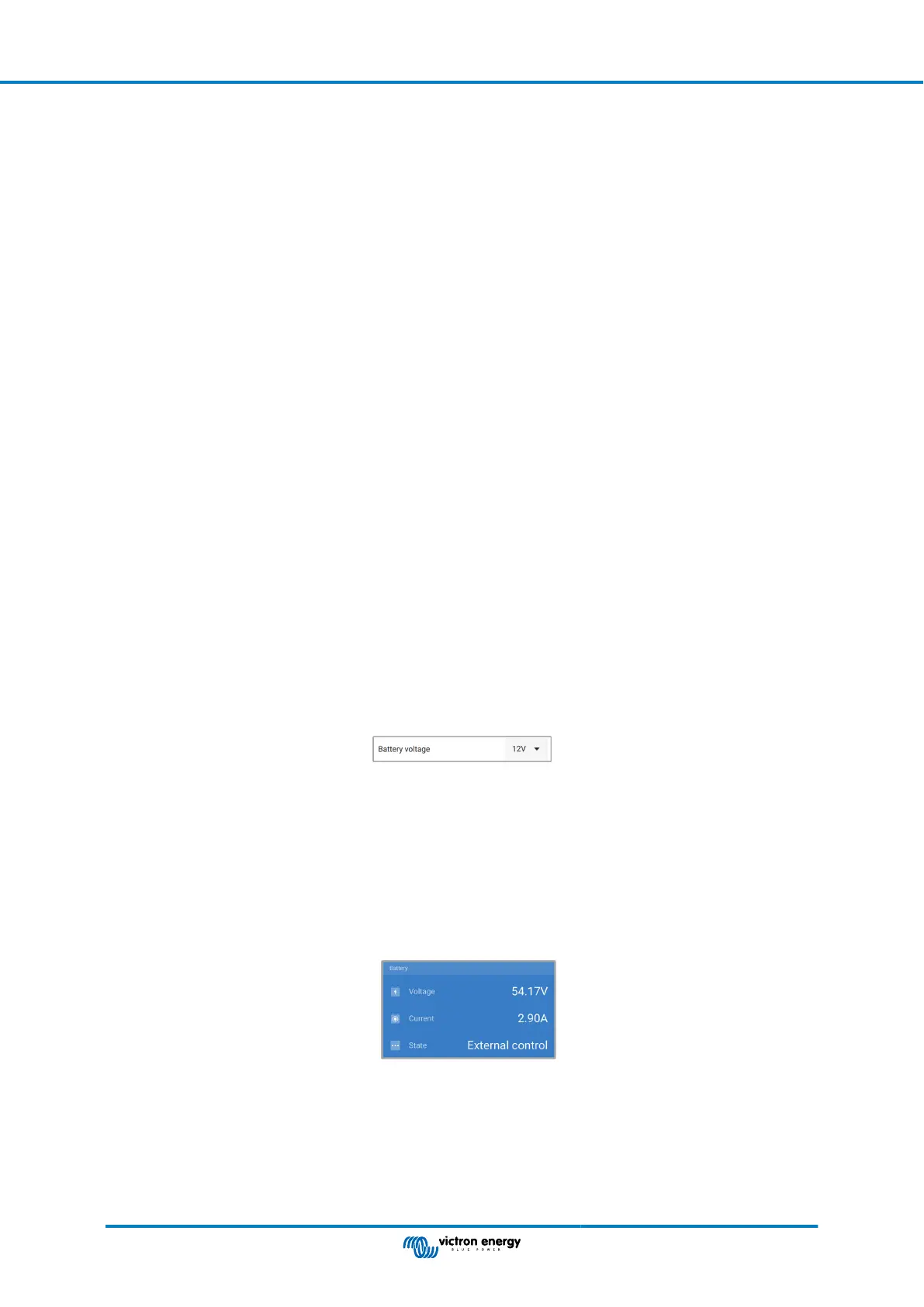